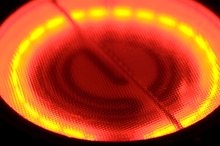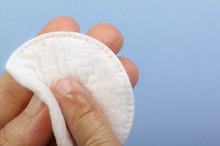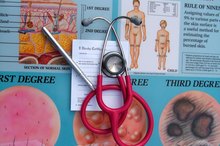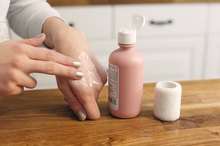How to Soothe Burns
Whether it's from staying out too long in the sun or accidentally touching a hot pot handle, minor thermal burns are a common occurrence among adults and children. In the US, the Centers for Disease Control estimates that 1.1 million people experience burns requiring medical attention every year, with many more suffering mild burns that can be treated at home 2. Mild burns are characterized by reddish skin, swelling, moderate pain or topical blisters that respond to first-aid treatment.
If you are experiencing serious medical symptoms, seek emergency treatment immediately.
Assess whether the burn is appropriate for at-home treatment. Mild to moderate sunburns and burns -- reddened skin which may blister -- received from touching hot surfaces can usually be treated at home, provided the burn isn't on the hands, face, feet, groin or major joint, or over a large area of the body. Seek immediate medical attention if your burn affects these areas, or your burned skin is white or charred.
How to Treat an Oven Burn
Learn More
Hold the burned area under cool running water for 10 to 15 minutes, immediately after receiving the injury, to temporarily relieve pain and reduce swelling. Or, apply cool compresses to the skin. Avoid cold water or ice, which can lower your body temperature and cause more damage to the burned skin.
Apply the sterile non-stick gauze bandage to the burned area to protect blistered skin from air and lint. Avoid breaking blisters, which may increase risk of infection. Change the bandage every 48 hours.
How to Treat a Burn Bubble
Learn More
Moisturize sunburns, which are usually too large to wrap in a bandage, with aloe vera gel. Apply the gel liberally until it's absorbed by the skin.
Take a nonprescription pain reliever such as aspirin (Bayer), ibuprofen (Motrin, Advil), acetaminophen (Tylenol) or naproxen sodium (Naprosyn, Aleve) according to dosage instructions to minimize discomfort, if approved by your doctor.
Allow the burn to heal while watching for signs of infection, which include increasing pain, redness, swelling, fever or oozing. Call your doctor immediately if you notice any of these symptoms.
Treat the burned skin gently, even after healing. Wear sunscreen over the area to avoid tanning or re-injuring the skin for at least a year.
Warnings
For severe burns with charring of the skin, or if you suffer breathing problems, carbon monoxide poisoning or shock, seek emergency medical attention immediately.
Related Articles
References
- Indian Journal of Plastic Surgery: Burn Wound -- How it Differs from Other Wounds?
- Rowan MP, Cancio LC, Elster EA, et al. Burn wound healing and treatment: review and advancements. Crit Care. 2015;19:243. doi:10.1186/s13054-015-0961-2
- Maenthaisong R, Chaiyakunapruk N, Niruntraporn S, Kongkaew C. The efficacy of aloe vera used for burn wound healing: a systematic review. Burns. 2007;33(6):713-8. doi:10.1016/j.burns.2006.10.384
- The New Zealand Medical Journal. Honey in the treatment of burns: a systematic review and meta-analysis of its efficacy. Published May 22, 2009
- Al-waili N, Salom K, Al-ghamdi AA. Honey for wound healing, ulcers, and burns; data supporting its use in clinical practice. ScientificWorldJournal. 2011;11:766-87. doi:10.1100/tsw.2011.78
- Chandran PK, Kuttan R. Effect of Calendula officinalis Flower Extract on Acute Phase Proteins, Antioxidant Defense Mechanism and Granuloma Formation During Thermal Burns. J Clin Biochem Nutr. 2008;43(2):58–64. doi:10.3164/jcbn.2008043
- Al-Waili N, Salom K, Al-Ghamdi AA. "Honey for wound healing, ulcers, and burns; data supporting its use in clinical practice." ScientificWorldJournal. 2011 Apr 5;11:766-87.
- American Academy of Family Physicians. "First Aid: Burns". December 2010.
- Boukraâ L, Sulaiman SA. "Honey use in burn management: potentials and limitations." Forsch Komplementmed. 2010 Apr;17(2):74-80.
- Chandran PK, Kuttan R. "Effect of Calendula officinalis Flower Extract on Acute Phase Proteins, Antioxidant Defense Mechanism and Granuloma Formation During Thermal Burns." J Clin Biochem Nutr. 2008 Sep;43(2):58-64.
- Maenthaisong R, Chaiyakunapruk N, Niruntraporn S, Kongkaew C. "The efficacy of aloe vera used for burn wound healing: a systematic review." Burns. 2007 Sep;33(6):713-8.
- Molan PC. "Potential of honey in the treatment of wounds and burns." Am J Clin Dermatol. 2001;2(1):13-9.








